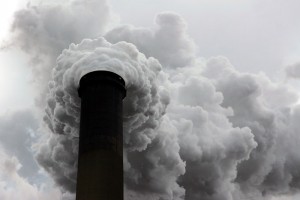Coal on the Ropes: In One Week, 4,099 MW of U.S. Coal Plants Are Set to Close or Hung Up in Court
 In less than one week, eight U.S. coal plants representing 4,099 MW of capacity have been put on the chopping block for closure or have been delayed in court due to environmental concerns. It is yet more proof of the major changes taking place in the American coal industry.
In less than one week, eight U.S. coal plants representing 4,099 MW of capacity have been put on the chopping block for closure or have been delayed in court due to environmental concerns. It is yet more proof of the major changes taking place in the American coal industry.The dirtiest and oldest coal plants are being shut down in greater numbers because of
*cheap natural gas
*rising coal prices
*strengthening environmental standards
*more utilities embracing energy efficiency and demand response
*improving cost-competitiveness of solar and wind and other renewables
At the same time, a strong movement against coal is preventing new facilities from going forward.
The latest round of closures started last week when FirstEnergy said it would close six plants in its portfolio totaling 2,689 MW of capacity. The plants are getting very old, making them some of the dirtiest in the country. The average age of the six units is 55 years, with the oldest facility built in 1947. Five out of six of the plants had been relegated to reserve plants, FirstEnergy spokesman Mark Durbin told Politico:
“The bottom line,” Durbin said, “is the plants haven’t run all that much in the last three years,” and the company doesn’t “think they’re going to be running much” in the years to come, so it “didn’t make business sense” to keep them open. Now that they know the plants have no future, “we couldn’t justify spending any additional money.”
Rather than clean up the plants to meet new standards for mercury and other air pollutants, FirstEnergy made the business decision to close the facilities.
And this week, the power company Dominion made an equally big announcement, saying it would close one of the oldest coal plants in America — an 80-year old facility worth 515 MW of capacity. Dominion spokesman Dan Genest told the Indianapolis Star than the price of gas and improved mercury standards didn’t make it feasible to keep such an old plant running:
“When we looked at the projected cost of installing environmental controls to continue to operate State Line, it did not make economic sense to do so because of expected market prices, primarily driven by the low cost of natural gas,” he said.
The plant’s current owner, Richmond, Va.-based Dominion Resources Services, warned Wall Street last year that the plant with its 1950s and 1960s technology would be just too expensive to keep open if the Obama Administration pushed tougher air pollution standards.
These “new” air pollution rules established by the EPA have actually been in the works for the last decade — and they are far from the only reason causing plant closures. According to the utility industry’s advocacy organization, the Edison Electric Institute, “retirements [for old coal power plants] are taking place for a variety of reasons, including plant age, fuel price drop from low natural gas prices, and decreased demand, among other reasons.”
While a variety of forces are causing a phase out of old coal plants across the country, it is getting extraordinarily difficult — if not almost impossible — to build new coal in America. A combination of rising fuel costs, less expensive alternatives, and increasing legal challenges from environmental groups is putting “coal on the ropes,” according to Bruce Nilles, senior director of the Sierra Club’s Beyond Coal campaign.
This confluence of factors came together in Kansas yesterday, when a U.S. district judge ruled that an 895-MW coal plant planned for the state should not go forward without more environmental and health impact assessments. Environmental groups challenged the expansion project because the U.S. Department of Agriculture had skipped such a study before allowing the project to move forward. The environmental law firm Earth Justice responded to the decision:
In his decision, Judge Emmett Sullivan emphasized that the expansion will need additional approval from the federal government as a result of changes to the project from earlier configurations. He enjoined the government from issuing any additional approvals pending a full “environmental impact statement” (“EIS”) disclosing all of the environmental and human health impacts of the project, which includes harm to human health as well as contribution to climate change. An EIS must also discuss “alternatives” to a proposed project, such as renewable energy projects and energy conservation.
“From a public health and environmental perspective, coal-fired power is the most expensive option available,” said Scott Allegrucci of Sierra Club’s Beyond Coal Campaign. “We are confident that once the environmental impacts of this plant are considered in light of alternatives, the project’s impacts will be unacceptable and it will be rejected.”
The environmental and economic forces working against American coal generation appear to be getting stronger. And this week was a sign of things to come.
You can return to the main Market News page, or press the Back button on your browser.

